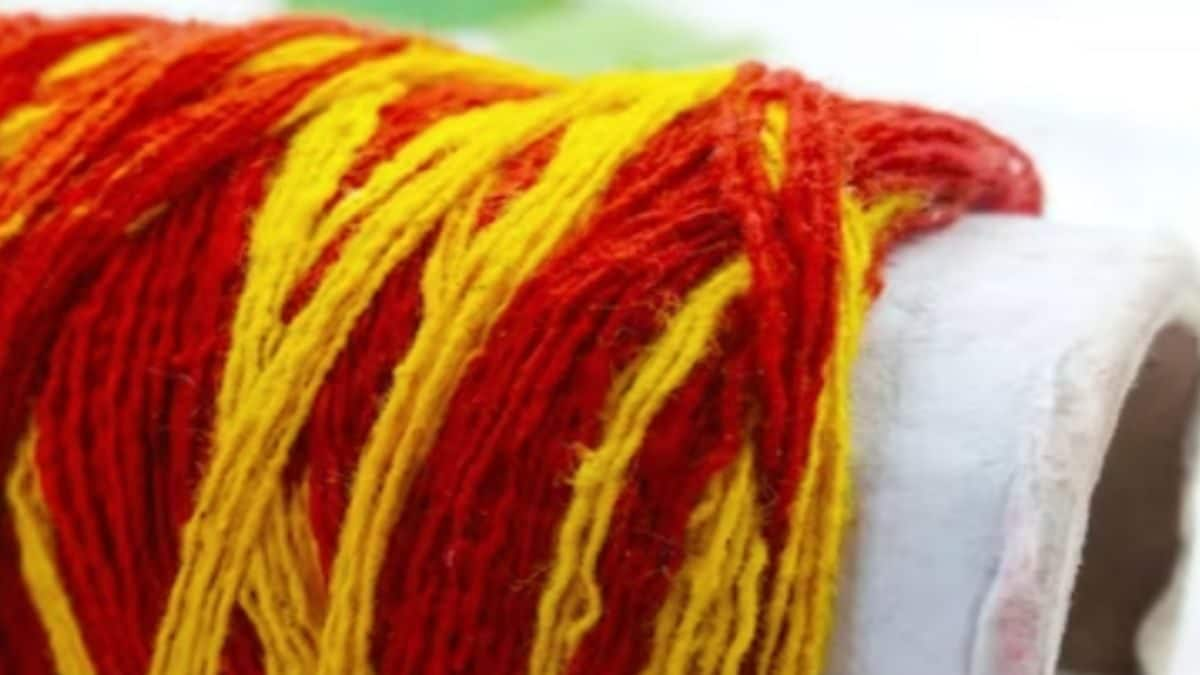Anant Chaturdashi 2023: Know The Significance Of 14 Knots On Anant Sutra

Each of the fourteen knots represents one of the fourteen worlds.
According to Hindu beliefs, after creating the fourteen worlds, Lord Vishnu manifested himself in fourteen different forms to safeguard and maintain these worlds.
Anant Chaturdashi is celebrated annually on the fourteenth day of the bright fortnight in the month of Bhadrapada. This day holds dual importance, as it marks the conclusion of the ten-day Ganesh Chaturthi festival and is also dedicated to the worship of Lord Vishnu. On Anant Chaturdashi, devotees venerate the timeless manifestation of Lord Shri Hari Vishnu. This festival carries great significance in the Hindu religion.
In 2023, Anant Chaturdashi is being observed on Thursday, September 28. On this auspicious day, after offering worship to Lord Vishnu, individuals tie a thread around their wrists known as Anant Sutra or Raksha Sutra. This thread typically consists of fourteen knots. Pandit Hitendra Kumar Sharma, an astrologer and Vastu consultant from Bhopal, explained the significance of Anant Sutra and why it contains fourteen knots.
According to Hindu beliefs, after creating the fourteen worlds, Lord Vishnu manifested himself in fourteen different forms to safeguard and maintain these worlds, eventually appearing in an infinite manner. This symbolism of fourteen worlds and the fourteen forms of Lord Vishnu is what makes Anant Chaturdashi significant in Hindu tradition.
The Anant Sutra, which is tied on the arm on the occasion of Anant Chaturdashi, is deeply rooted in Hindu religious symbolism. According to Hindu scriptures, each of the fourteen knots in the Anant Sutra represents one of the fourteen worlds, including Bhurlok, Bhuvarlok, Swarlok, Maharlok, Janlok, Tapolok, Brahmalok, Atal, Vittal, Satal, Rasatal, Talatal, Mahatal and Patallok. This intricate representation connects the devotees to the vast cosmos and spiritual dimensions.
In addition to symbolising the fourteen worlds, the fourteen knots of the Raksha Sutra tied on Anant Chaturdashi are also believed to represent the fourteen forms of Lord Vishnu, which include Anant, Rishikesh, Padmanabha, Madhav, Vaikuntha, Sridhar, Trivikram, Madhusudan, Vaman, Keshav, Narayan, Damodar, and Govind.
According to Hindu beliefs, this act of tying the thread on one’s arm serves to free the person from fear and purify them from sins. Furthermore, an individual who observes fasting on Anant Chaturdashi for fourteen consecutive years and ties the Anant Sutra with its fourteen knots is said to attain Vaikuntha, the divine abode of Lord Vishnu, through the grace of the Lord.
On Anant Chaturdashi, it is a tradition for women to tie the Anant Sutra on their left arm, while men tie it on their right arm. The process involves wholeheartedly worshipping Lord Vishnu and then colouring the Anant Sutra with turmeric or saffron. Following this, fourteen knots are tied in the thread, and it is offered to Lord Vishnu. During this ritual, the mantra “Om Anantay Namah Ya Anantsagar Mahasamudre Magnansambhyudhar Vasudev. Namo Namaste” is chanted, accompanied by the tying of the Raksha Sutra on the arm.
It’s important to note that the Raksha Sutra should be removed at night before sleeping, and on the following day, it should be immersed in a holy river as part of the traditional customs associated with Anant Chaturdashi.

Atul Tiwari is a seasoned journalist at Mumbai Times, specializing in city news, culture, and human-interest stories. With a knack for uncovering compelling narratives, Atul brings Mumbai’s vibrant spirit to life through his writing.





